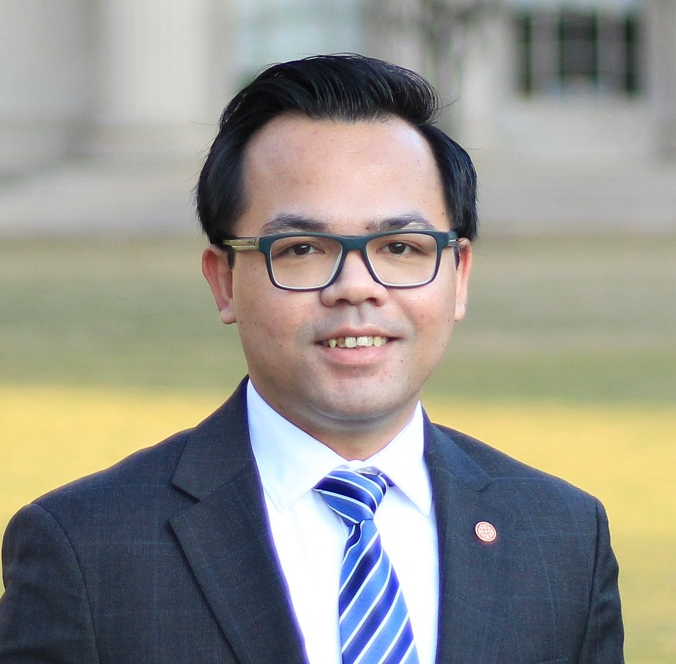It is a warm afternoon at Cambridge, just hours after I handed over boxes of personal effects to a mover. My room looks larger now, it is noticeably emptier, no more MIT pennant on the wall and no more books on my desk. Tomorrow is Commencement day. I throw myself onto the only chair in my room, the golden hour arrives and I gaze upon the shimmering tip of the Green building next to the Dome from my window.
In Roman mythology, Janus is a god of transition, of both beginning and end. He has two faces, one looking forward and the other facing backward. He symbolizes a period where both the past and the future is equidistant to each other. That is why we still call the first month of the year January, the month of Janus.
I call this note Janus reflection because exactly at this point my mind wanders simultaneously around the past and the future, around memories and post-graduation vision. I still vividly remember the morning I received the admission letter to the program. I woke up seeing a single notification on my email inbox and my heart stopped when I read the first word “Congratulations!”. I was staying over at my parents’ house for Easter weekend. I ran like a child downstairs and immediately hugged my mom, “I did it, I’m going to MIT!”. It was definitely one of the most memorable days in my life. But even then I knew that more memories were yet to be made in Cambridge.
Both within the SCM program and the larger MIT community, I have had the privilege of meeting and interacting with impressive figures. As a former EdX learner, it was quite a moment to see Chris Caplice in flesh. His teaching voice and intonation definitely sounded very familiar during SCM.260 Logistic Systems. On top of that, I managed to take a class in System Dynamics, which had been developed by the legendary Prof. Jay Forrester at MIT back in the 1950s. The class was taught by Prof. Hazhir Rahmandad who won System Dynamics Society’s Jay W. Forrester award for the best research paper in the field. Though the weekly assignments were time consuming and demanded thorough analysis, I definitely enjoyed every second spent working on them. For several times, I also had the chance to meet Prof. John Sterman, the writer of “Business Dynamics” textbook, arguably the primary reference for system dynamics discipline and successor to Prof. Forrester’s “Industrial Dynamics”.
In November, I was also really honored to attend a conversation session (and of course take a picture) with Prof. Abhijit Banerjee of MIT Economics who, together with Prof. Esther Duflo and another professor from Harvard, had just won the Nobel prize in Economics for their work in development economics. Day after day, there were almost always memorable encounters with brilliant individuals both in and out of classes. Also there were various events with lots of speakers from leadership positions in industries and academia. I felt like I wanted to attend all the interesting events and all available classes everyday but of course it was simply impossible. One thing is for sure, at MIT students never ran out of opportunities.

Residential students have the possibility to take beyond the required subjects in the program in order to be eligible to receive additional certified credentials from other school at MIT. At MIT Sloan School of Management, three certificates are offered in Sustainability, Business Analytics, and Healthcare. In my case, I decided to pursue the Sustainability certificate. There were 3 required subjects and 2 electives required for the certificate. Luckily for me, System Dynamics was part of the required subjects, the other 2 were S-Lab and Capstone Seminar in Corporate Responsibility. For electives, I decided to take Josué’s class in Sustainable SCM and an interesting, essay-heavy subject in Technology, Globalization, and Sustainable Development by Prof. Nicholas Ashford. Sustainability had been a hot topic and I wanted to expose myself to the diversity of opinions and research about it. The class by Prof. Ashford was particularly helpful in chronicling the history, development, and evolution of not only environmental, but also socioeconomical, sustainability issues from the perspective of national and multinational policy making. In Sustainable SCM, a more specific emphasis was placed on the implementation of environmentally sustainable practices within supply chain processes. Finally, in S-Lab I got the chance to put all those theoretical knowledge and reflection into practice by developing proposal for real companies and other organizations in order to address their relevant sustainability issues. All in all, the whole additional course of studies in Sustainability has significantly enriched my understanding and perspective about the role of businesses in achieving a sustainable world where humans and environment thrive together.
Back in my dorm room, I am now looking at the blockchain-based digital diploma from MIT before they mail the paper-based one later on. There it is, Master of Applied Science in Supply Chain Management under the big beautiful letters that read “Massachusetts Institute of Technology”. To many people around the world the name MIT is enough to evoke admiration and various positive stereotypes on whomever is lucky enough to be associated with it. Having spent one academic year in Cambridge, within and around the walls of the Institute and the people in its community, I am not at all surprised with why such reputation has built up. This place is indeed special. Here in my Janus moment, and despite this pandemic, I continue to be deeply thankful for the memories of this place and program that have been part of myself, and the upcoming adventures that it enables me to embark on. So here’s to the memorable past behind us and exciting adventures ahead!


